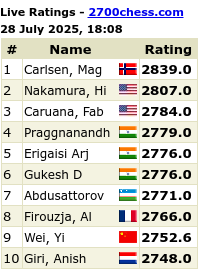1. e4 c5
2. Nf3 d6
3. d4 cxd4 (open sicilian)
4. Nxd4 Nc6
5. Nc3 Nf6
6. Bc4 g6 (White play Fischer's favoured placement of the Bishop)
7. Bg5 Bg7 (Black plays the Dragon)
8. Qd2 Bd7 (White would ideally like to swap off the Dragon Bishop on h6 or g7 because this piece becomes stronger generally speaking the longer it is left on and kept alive!)
9. f3 h5 (White's move is designed to stop Ng4, but Bishop has already moved to g5 therefore White maybe planning a g4 push - but that would leave f3 weakened? Black has decided to defer castling with h5 to avoid an exchange of Bishops)
10. 0-0-0 a6 (Now White has castled Q-side - Black must start operations on this side of the board)
11. a3 Rc8 (I guess that white plans to stop the Knight hopping to b4, but the White Queen already controls this square so that 'extra' move may cost White!)
12. Ba2 Ne5 (I think that White preempted the Knight's move to e5, which is a standard line in the Dragon)
13. h3 Nc4 (Again, a pawn move without a real purpose! The better move is to attack Black's kingside and make him think ... h3 is too slow! )
14. Bxc4 Rxc4
15. Rde1 Qb6
16. Nb3 a5 (Black wants to dislodge the Knight on b3)
17. Kb1 a4 (Black achieves his objective)
18. Nc1 Nxe4! (Sacrificing the Knight for the game! The diagonal is clear for the Dragon Bishop to support mate on b2 and Queen is en-prise - the ideal Sicilian Dragon position for Black ... and a win)
Note: if 19. Nxe4 then Qxb2# or if 19.fxe4 then Bxc3 20.Nd3 Bxd2 looks fine
0 - 1
Note: the above game was played at an amateur level (5 mins each on the clock). Stronger lines for White and Black are obviously playable but the character of this game provides great instruction for the amateur player who wants to aquaint themselves with the plans in the Sicilian Dragon.
Active Rook vs passive Rook
12 years ago
















No comments:
Post a Comment